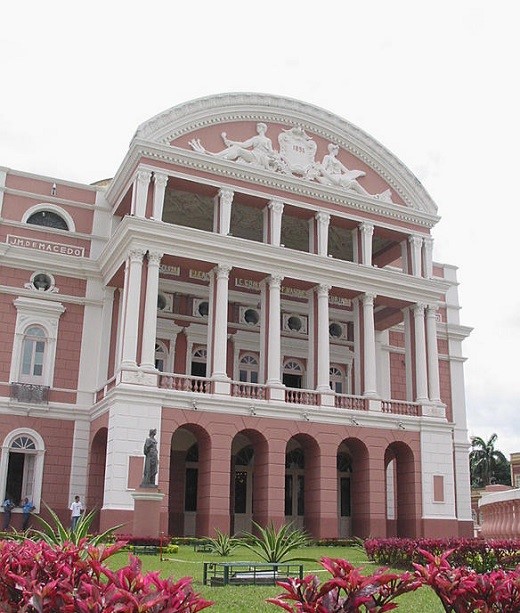
Frontis of the Amazonas theater
Manaus is the capital of the state of Amazonas with around 2 million inhabitants located in the heart of the Amazon region and the point where the Negro River flows into the great Amazon River.
The city has a short but interesting history, as it is inextricably linked to the history of rubber and its flourishing economy of that time.
Founded in the 17th century, Manaus would never have been more than a small Brazilian city had it not been for an American named Charles goodyear , who developed the process for hardening rubber known as vulcanization, and an Irishman named John dunlop , who patented the tire made of this material.
The increasing use of tires led to a sharp rise in rubber prices, and the owners of the land on which the rubber trees grew developed a system of semi-slavery to guarantee cheap labor.
The system consisted of incorporating workers from the sugar cane and coffee plantations, promising them the opportunity to make some easy money and return to their richer homes than before. However, they were never to return.
The rubber tappers (the name given to the rubber plantation workers) had to transform the sap of the rubber trees into 50 kg packages of latex. The truth is that the exploiters made huge profits such as low production costs by selling the rubber in the European markets at a high price.
They were the nouveau riche from Manaus: they imported the best items from Europe - cars, appliances, clothes from the chicest boutiques in Paris, glassware and precious stones. The historic buildings still standing in Manaus today date from this period.
Particularly noteworthy is the Amazonas Theater, which is in an excellent state of preservation. The entrance to the theater was made of rubber to ensure that the cars do not disturb the noise inside.
However, it all came to an end when an Englishman took some seeds from a gum tree back to England, where they were planted and later taken to plantations in Malaysia.
Once the monopoly was gone, the price of rubber plummeted and the rubber tree owners of Manaus went bankrupt. The city fell into decline and, although it experienced brief periods of prosperity like those during World War II, it never regained its former wealth and splendor.